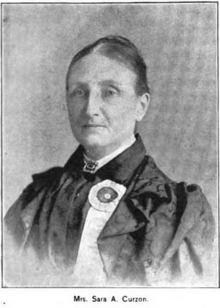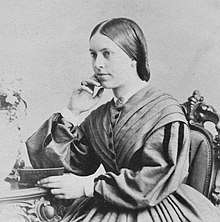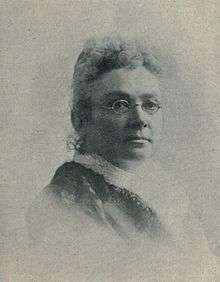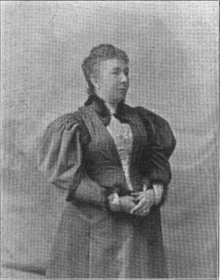Women's suffrage in Canada


Women's suffrage in Canada occurred at different times in different jurisdictions. By the close of 1918, all the Canadian provinces except Quebec had granted full suffrage to women. Municipal suffrage was granted in 1884 to property-owning widows and spinsters in the provinces of Quebec and Ontario; in 1886, in the province of New Brunswick, to all property-owning women except those whose husbands were voters; in Nova Scotia, in 1886; and in Prince Edward Island, in 1888, to property-owning widows and spinsters. In 1916, full suffrage was given to women in Manitoba, Saskatchewan, Alberta, and British Columbia.[1] Women in Quebec did not receive full suffrage until 1940.[2]
Early history
The cause of women's suffrage began in 1867, Canadian Confederation year, when Dr. Emily Stowe came to Toronto to practise medicine. She was the first, and for many years the sole woman physician in Canada. Stowe, vitally interested in all matters relating to women, at once came before the public as a lecturer upon topics then somewhat new, "Woman's Sphere" and "Women in the Professions," being her subjects. She lectured not only in Toronto, but, under the auspices of various Mechanics' Institutes, in Ottawa, Whitby, and Bradford. After attending a meeting of the American Society for the Advancement of Women, in Cleveland in 1877, and meeting many women of the United States, Stowe, on returning home, felt that the time had arrived for some similar union among Canadian women. Talking it over with her friend, Helen Archibald, they decided that it would not be politic to attempt at once a suffrage association but, in November 1877, organized what was known as "The Toronto Woman's Literary Club".[3]
The Toronto Woman's Literary Club

During the next five years, this club made phenomenal growth, adding to its ranks such woman as Mary McDonell (WCTU), Mrs. W. B. Hamilton, Mrs. W. I. Mackenzie, Mrs. J. Austin Shaw, besides others. It also called forth a surprising amount of attention from the press. Among the most able assistants from its very inception was Sarah Anne Curzon, for several years associate editor of the Canada Citizen. It was the habit of the club to meet each Thursday at 3 p.m., at one of the members homes. Though not avowedly a suffrage society, no opportunity was lost of promoting this basic idea of the founders. One of the earliest efforts in this direction was a paper, by Archibald, entitled "Woman Under the Civil Law," which elicited discussion and served as an educator. During these years, too, mainly through the work of the Woman's Literary Club, the University of Toronto, was opened to women. Eliza Balmer was the first female student.[3]
Canadian Woman Suffrage Association

It was believed in 1883 that public sentiment had sufficiently progressed to warrant the formation of a regular Woman-Suffrage Society. On February 1, 1883, the club met and decided the following was record: "... that in view of the ultimate end for which the Toronto Woman's Literary Club was formed, having been attained, viz., to foster a general and living public sentiment in favor of women suffrage, this Club hereby disband, to form a Canadian Women's Suffrage Association." The following month, on March 5, at a meeting of the City Council, the Toronto Women's Literary and Social Progress Club requested the use of the Council Chambers for the purpose of holding a conversation on March 9 to discuss the advisability of granting the franchise to those women who possess the property qualification which entitles men to hold it; and then to proceed to form a suffrage club. Accordingly, on that date, Jessie Turnbull McEwen, then President of the Club, was present along with Mayor Arthur Radcliffe Boswell, ex-Alderman John Hallam, Alderman John Baxter, John Wilson Bengough, Thomas Bengough, Thomas Phillips Thompson, and Mr. Burgess, editor of Citizen. The Canadian Woman Suffrage Association was formally inaugurated, and 40 persons enrolled themselves as members that evening.[3]
The first piece of work undertaken by the Association was the securing of the municipal franchise for the women of Ontario. On September 10, 1883, a committee was appointed to urge the City Council to petition the Local Government to pass a bill conferring the municipal franchise upon women. The committee consisted of Stowe, McEwen, Mrs. Hamilton, Mrs. Miller, Mrs. Mackenzie, and Mrs. Curzon, with the power to add others. The committee waited upon Hon. Oliver Mowat. From the beginning, the members of the Association recognized that it would be manifestly unjust to exclude married women from the exercise of the franchise, bestowing it only on widows and single women. However, it was agreed that it was not politic to criticize the franchise bill before the House, on the principle of 'half a loaf being better than no bread'. Accordingly, objections were set aside, and every woman worked towards securing this partial reform, even though, if married, she would not directly benefit by it.[3]
1880s
In 1882, the municipal act was so amended as to give married women, widows and spinsters, if possessed of the necessary qualifications, the right to vote on by-laws and some other minor municipal matters. Again, in 1884, the act was still further amended, extending the right to vote at municipal elections to widows and unmarried women on all matters. In Toronto, January 4, 1886, the women polled a large vote, resulting in the election of the candidate pledged to reform.[4]
Another important work accomplished about this time, more or less directly through the influence of the Suffrage Association, was the opening of the Woman's Medical College, Toronto. Stowe (with her friend, Jennie Kidd Trout) had, in the 1870s, forced her way to a season's lectures on chemistry in the Toronto School of Medicine. About 1879, she intimated her intention of entering her daughter, Miss Augusta Stowe, as a medical student. Dr. Augusta Stowe Gullen, was awarded her degree of M. D. C. M. in 1883, the first woman to be awarded such a degree under Canadian institutions. As a consequence of the persistence of Stowe and her daughter, other women became aware of the possibilities in the medical profession, and so numerous were the applications for admission that it was deemed expedient to open a Woman's Medical College in Toronto. Gullen was appointed Demonstrator in Anatomy.[3]
After the labor involved in securing the municipal suffrage in 1883, and later, in struggling for the opening of the Woman's Medical College, there was a lull until 1889, when Stowe made arrangements to bring Dr. Anna Howard Shaw to Toronto, to lecture. Stowe sent out 4,000 invitations, to every member of Parliament, council, school Board and ministerial association, inviting each member to be present to hear about the Woman Question. The lecture was a success, creating so much interest in the matter that the old suffrage association, which had been practically non existent for several seasons, was re-organized, with Stowe as president, and Mrs. Curzon as secretary. In December 1889, Susan B. Anthony was secured to lecture in the Woman's Medical College auditorium. She succeeded in increasing interest in suffrage work, until it spread from the women of Toronto to those of surrounding towns, with new groups organizing in many places. Next, the Association secured Mary Seymour Howell, of Albany, New York, to lecture. Mrs. McDonell, ever indefatigable in her zeal for women, accompanied Howell to many towns throughout Ontario, to stimulate suffrage clubs already in existence and to form others.[3]
1890s

In early 1890, it was believed that a Dominion Woman's Enfranchisement Convention might be assembled. This convention was duly announced to be held in Association Hall, Toronto, June 12–13, 1890. Delegates were received from the various Suffrage Clubs then existing. Also, there were representatives from American Clubs, among the latter: Dr. Hannah A. Kimball, Chicago; Rev. Anna Shaw ; Mrs. Isabella Hooker, (sister of Henry Ward Beecher), and Mrs. McLellan Brown, lawyer, and president of a Cincinnati college. The papers that elicited most attention were: "The Ballot, its Relation to Economics; " "Woman as Wage-Earner," and "Woman in the Medical Profession." Yellow, the color of gold, and the symbol of wisdom in the East, was the badge of equal suffragists all over the continent, and was used for decorations at all meetings of the hall. Some of the mottoes used were "Canada's Daughters Should be Free", "No Sex in Citizenship", "Women are half the People", and "Woman, Man's Equal". The Dominion Woman's Enfranchisement Association became duly incorporated.[3]
In 1890, in accordance with the desire of the Equal-Suffragists, Mayor Edward Frederick Clarke and the Toronto City Council determined to invite the Association for the Advancement of Women (A.A.W.), to hold its 18th annual Congress in Toronto. One is well within bounds in saying that no more brilliant gathering ever honored our country, Julia Ward Howe, author and litterateur, the friend and associate of Emerson, Longfellow, and Holmes; Mary F. Eastman, one of the leading New England educationists; Alice Stone Blackwell, editor of the Woman's Journal, and daughter of the Rev. Lucy Stone; Clara Berwick Colby, editor of the Woman's Tribune in Beatrice, Nebraska, in 1883; Rev. Florence E. Kalloch, of Chicago; Mrs. Kate Tannatt Woods, journalist and writer.[3]
In 1895, the Equal Suffragists in Manitoba were under the leadership of Dr. Amelia Youmans. She indicated that the women of the W.C.T.U. were the first to espouse equal suffrage in Manitoba, having twice brought largely signed petitions before the Provincial Legislature. As early as 1872, the statutes in British Columbia were constructed in such a shape as to give married women a vote in municipal matters. By 1895 in Quebec, women for many years had exercised the municipal franchise, although historically, when it was held that a woman would be polluted by entering a polling-booth, it was customary for a notary to call upon the Quebec women in their homes, where they would, in his presence, record their vote without leaving their chair.Prince Edward Island was the only province in Canada in which there is no legislation regarding woman suffrage. Not even the municipal franchise had been conferred. In New Brunswick, Sarah Manning, of St. John, was president of the W.E.A. In the Maritime Provinces, Edith Archibald was president of the Maritime W.C.T.U. and was perhaps, the pioneer suffragist of Nova Scotia. Mrs. Leon Owens was president of the Dominion Women's Enfranchisement Association (W.E.A.) of Halifax.[3]
References
- ↑ Finley, Falconer & Newbolt 1920, p. 524.
- ↑ Kalbfleisch, John. "Quebec, 1944: Finally, women are allowed to vote". Montreal Gazette. Montreal Gazette. Retrieved 17 June 2018.
- 1 2 3 4 5 6 7 8 9 Canadian Magazine 1895, p. 328-.
- ↑ Stanton, Anthony & Gage 1886, p. 832.
Bibliography



Further reading
- Strong-Boag, Veronica (2016). "Women's Suffrage in Canada". The Canadian Encyclopedia. Toronto: Historica Canada. OCLC 21411669. Retrieved 24 April 2018.
- Tremblay, Manon; Trimble, Linda (2003). Women and Electoral Politics in Canada. Don Mills, ON: Oford University Press. OCLC 500909205.
External links
| Wikimedia Commons has media related to Women's suffrage in Canada. |

